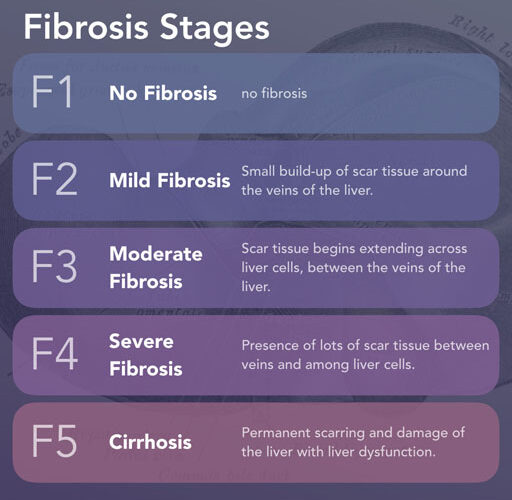
How does Fibroscan measure liver stiffness?
Fibroscan uses ultrasound waves using a technique called transient elastography. Liver stiffness is evaluated by measuring the speed of a vibration wave as it travels through the liver. The speed of the vibration wave is slower in a soft (normal) liver and faster in a firm or hard (fibrotic) liver. Liver stiffness is eventually expressed in kPa (kilopascals). The stiffer the liver, higher is the kPa value. The normal stiffness is between 2 and 6 kPa. Values above 8 kPa generally indicate presence of liver fibrosis. The highest possible result is 75 kPa. Liver fibrosis progress through four stages and with each stage the liver becomes more fibrotic.
Liver fibrosis has 4 stages:
• F0 means no fibrosis (less than 6.5 kPa)
• F1 is mild fibrosis (less than 8 kPa)
• F2 is moderate fibrosis (8 – 10 kPa)
• F3 is severe fibrosis (10 – 14 kPa)
• F4 is advanced fibrosis or cirrhosis (more than 14 kPa)
If you have any questions please fell free to contact with us.

 Book Online Consultation
Book Online Consultation